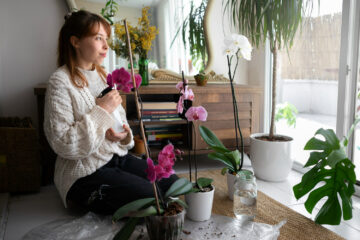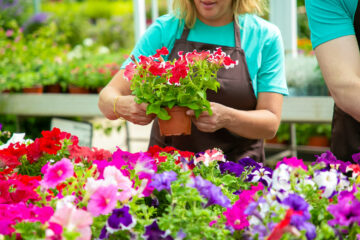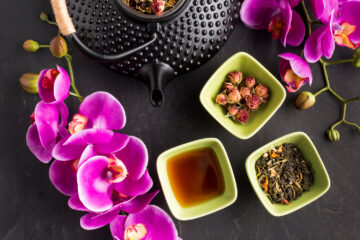Discover the captivating world of ornamental flowers! From vibrant annuals and enduring perennials to striking bulbs and flowering shrubs, these plants transform gardens and indoor spaces into visual delights. Learn expert tips on selecting, designing, and nurturing these blooms to create stunning landscapes and container gardens. Beyond beauty, these flowers support pollinators, improve air quality, and boost mental well-being. Dive into the secrets of successful gardening and let your space flourish with elegance.
Ornamental flowers are the jewels of any garden, capable of turning a mundane space into a breathtaking canvas of nature’s artistry. From the humble backyard to elaborate public parks, these floral marvels play a crucial role in landscaping and decoration, bringing life, color, and sometimes even a touch of drama to our surroundings.
Table of Contents
ToggleDiversity in Bloom: Types of Ornamental Flowers
The world of ornamental flowers is vast and varied, offering something for every taste and garden condition. Broadly, we can categorize them into four main groups:
- Annuals: These are the sprinters of the flower world, completing their life cycle in one growing season. Think of the cheerful faces of petunias, marigolds, and zinnias. They offer quick color and are perfect for seasonal displays.
- Perennials: The marathon runners of the garden, these plants return year after year. Peonies, daylilies, and coneflowers are popular choices that provide reliable beauty with minimal fuss.
- Bulbs: These underground storage organs produce some of the most anticipated blooms of the year. Tulips, daffodils, and lilies fall into this category, often heralding the arrival of spring.
- Flowering Shrubs: Larger and often woody, these plants like hydrangeas, rhododendrons, and roses can serve as anchor points in a garden design, providing structure along with their beautiful blooms.
Ornamental Flowers in Landscape Design
The versatility of ornamental flowers allows for their use in various landscape settings. They shine in traditional garden beds and borders, where they can be arranged in pleasing combinations of color, height, and texture. Container gardening has surged in popularity, especially in urban settings, allowing even those with limited space to enjoy a floral display.
Hanging baskets dripping with cascading flowers like fuchsias or trailing petunias can add vertical interest, while rock gardens offer a perfect setting for drought-tolerant ornamentals like sedums and ice plants.
Indoors, flowering houseplants bring a touch of nature to our living spaces. And let’s not forget the timeless appeal of cut flowers, which can elevate any room with their ephemeral beauty.
Choosing the Right Ornamental Flowers
Selecting the right flowers for your space requires consideration of several factors. Climate and growing conditions are paramount – a flower that thrives in the Pacific Northwest may wither in the Arizona desert. Bloom time and duration are also crucial; with careful planning, you can ensure a continuous display of color throughout the growing season.
Color and fragrance are often the most enticing aspects of ornamental flowers, but don’t overlook maintenance requirements. Some flowers demand more attention than others, so be realistic about the time you can devote to your garden.
Designing with Ornamental Flowers
Creating a cohesive and appealing ornamental flower garden is both an art and a science. Color schemes can range from monochromatic elegance to riotous rainbow displays. Consider texture and form as well – mixing plants with different leaf shapes and flower structures adds depth and interest to your design.
Height and layering are key principles in garden design. Generally, taller plants are placed at the back of a border, with medium-height plants in the middle and shorter ones in front. This creates a pleasing, tiered effect that allows all plants to be seen and appreciated.
Don’t forget about seasonal interest. By including plants that bloom at different times, along with those that offer attractive foliage or winter interest, you can create a garden that’s beautiful year-round.
Caring for Your Ornamental Flowers
Proper care is the cornerstone of a thriving ornamental flower garden. Let’s break down the key aspects:
- Soil Preparation: The foundation of healthy flowers is good soil. Most ornamental flowers prefer well-draining, loamy soil rich in organic matter. Before planting, work compost or well-rotted manure into your garden bed. This improves soil structure, enhances nutrient content, and promotes beneficial microbial activity.
- Watering: Watering needs vary significantly among flower species. As a general rule, most prefer consistent moisture without waterlogging. Water deeply and less frequently to encourage deep root growth. Consider installing a drip irrigation system for efficient watering, especially in drier climates.
- Fertilizing: A balanced, slow-release fertilizer applied in spring can provide nutrients throughout the growing season. For heavy feeders or long-blooming flowers, supplement with liquid fertilizer every 4-6 weeks. Be cautious not to over-fertilize, as this can lead to lush foliage at the expense of blooms.
- Pruning and Deadheading: Regular pruning maintains plant shape and encourages bushier growth. Deadheading – the removal of spent blooms – is crucial for many species. It not only keeps the plant looking tidy but also redirects energy from seed production back into flower production, extending the blooming period.
- Pest and Disease Management: Practice integrated pest management (IPM) to keep your flowers healthy. This involves:
- Regular inspection of plants
- Encouraging beneficial insects
- Using physical barriers like row covers when necessary
- Employing organic pesticides as a last resort
- Mulching: Apply a 2-3 inch layer of organic mulch around your flowers. This conserves moisture, suppresses weeds, and gradually improves soil quality as it breaks down.
- Winter Protection: In colder climates, provide winter protection for perennials. This might involve applying a layer of mulch over the crown of the plant or wrapping more delicate species in burlap.
The Hidden Benefits of Ornamental Flowers
While the aesthetic appeal of ornamental flowers is obvious, their benefits extend far beyond visual pleasure:
- Supporting Pollinators: Many ornamental flowers are excellent sources of nectar and pollen for bees, butterflies, and other pollinators. By planting a diverse range of flowers that bloom at different times, you can support pollinator populations throughout the growing season. This is crucial given the global decline in pollinator populations.
- Improving Air Quality: Like all plants, flowers absorb carbon dioxide and release oxygen through photosynthesis. Some flowers, such as chrysanthemums and peace lilies, are particularly effective at filtering indoor air pollutants like benzene and formaldehyde.
- Soil Health and Erosion Control: The root systems of ornamental flowers help prevent soil erosion by holding soil particles together. As roots grow and die, they add organic matter to the soil, improving its structure and nutrient content.
- Biodiversity: A flower garden supports a complex ecosystem. Beyond pollinators, it provides habitat for a variety of insects, birds, and small animals, contributing to local biodiversity.
- Mental Health Benefits: Numerous studies have shown that gardening and exposure to flowers can reduce stress, anxiety, and depression. The act of tending to a flower garden can be meditative and provides a sense of accomplishment.
- Temperature Regulation: In urban areas, expanses of concrete and asphalt create heat islands. Flower gardens, along with other vegetation, can help cool these areas through transpiration and by providing shade.
- Educational Value: Flower gardens can serve as living classrooms, teaching about plant life cycles, ecology, and the importance of environmental stewardship.
- Economic Benefits: Well-maintained ornamental flower gardens can increase property values. In public spaces, they can attract tourists and boost local economies.
- Cultural and Historical Significance: Many flowers have deep cultural or historical meanings. Growing these can help preserve cultural heritage and provide opportunities for storytelling and community building.
By understanding both the care requirements and the multifaceted benefits of ornamental flowers, gardeners can create spaces that are not only beautiful but also contribute positively to the environment and community. Whether you’re planting a small window box or designing a large public garden, the impact of ornamental flowers extends far beyond their colorful petals.
Conclusion
Ornamental flowers are more than just pretty faces in the garden. They’re a celebration of nature’s diversity, a tool for creative expression, and silent contributors to our environment’s health. Whether you’re a seasoned gardener or a curious beginner, I encourage you to explore the world of ornamental flowers. Your outdoor space – and our planet – will thank you for it.





